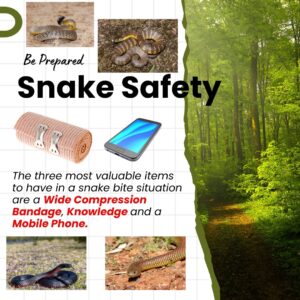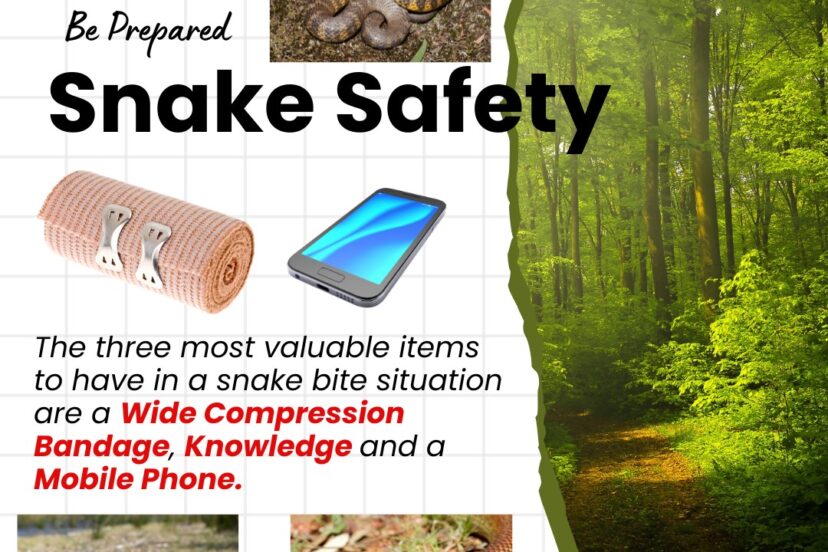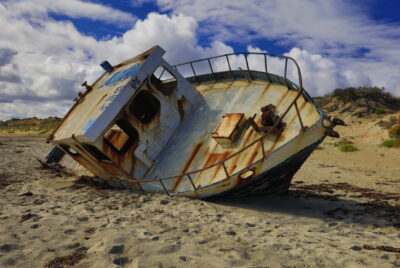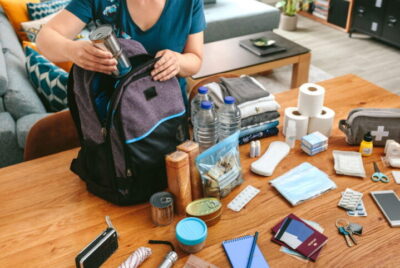Snake Bite Safety

Australian Snakes
Australian snakes tend to be quite shy so rarely seen and because of this deaths from snakes in Australia are relatively rare. If you see a snake the first thing to do is either be very still or move away from the snake. I am a registered snake catcher in 3 Australian States and one thing I have learnt about our snakes is if you don’t bother them, they won’t bother you.
Our snakes are simply not out to kill you because you aren’t food for them and their venom is a very precious commodity for their survival.
They don’t want to bite you so don’t force the issue!!.
They can also choose not to use their venom if they do bite you so a bite may be a first warning with no venom but never assume that is the case if you or anyone with you has been bitten
However bites do happen, usually because you have surprised the snake by stepping on it or too close to it. We do have some of the worlds deadliest snakes so if you or someone else has been bitten by a snake in Australia, it is important to take immediate action. Here are the steps to treat a snake bite in Australia:
1/ Stay calm:
It’s crucial to remain calm and avoid panicking. This can help slow down the spread of venom in your body.
2/ Seek immediate medical help:
Call emergency services (dial 000 in Australia) or the local snake bite hotline if available. Inform them about the snake bite and your location. Try to keep the affected person as still as possible to minimize venom circulation. Stay calm and follow the instructions they give you, they are trained to help you in this kind of situation
3/ Immobilize the affected limb:
If the bite is on a limb, immobilize it with a splint or sling. This can help slow the venom’s movement through the lymphatic system. However, don’t restrict blood circulation by using tight bandages or tourniquets.
4/ Remove constrictive items:
If there are any constrictive items like jewelry or clothing near the bite site, remove them. Swelling can occur, so it’s important to prevent circulation issues.
5/ Apply a pressure bandage
Most bites are on legs or arms and in those instances apply a pressure bandage: Use a broad elastic bandage (10-15 cm wide) to apply firm pressure to the entire limb, including the bite site. Start from the bite site and wrap towards the body, overlapping the bandages. Apply the bandage as tightly as you would for a sprained ankle. This slows the venom’s spread through the lymphatic system. Monitor the patients toes or fingers to make sure you haven’t applied the bandage so tightly that it is cutting off their circulation. Redo it if you have.
6/ Keep the person still and reassured:
Encourage the person to lie down and stay still to minimize venom absorption. Reassure them and try to keep them calm while waiting for medical help to arrive.
7/ Do not wash the bite area:
It may be tempting to wash the bite site, but it’s important not to do so. The venom on the skin can help identify the snake and assist in medical treatment.
8/ Do not suck or cut the bite:
Contrary to popular belief, you should never suck the venom out of a snake bite, and cutting the wound to let it bleed is also ineffective. These actions can worsen the situation and increase the risk of infection.

Remember, treating a snake bite is a medical emergency, and the best course of action is to seek professional medical help as soon as possible. The above steps are intended as initial first aid measures until medical professionals can provide proper care.



